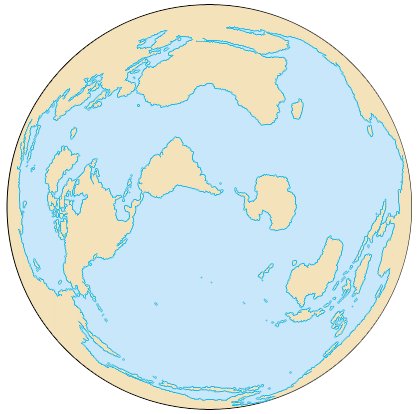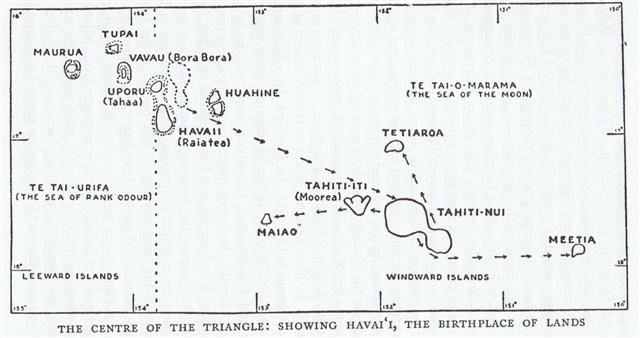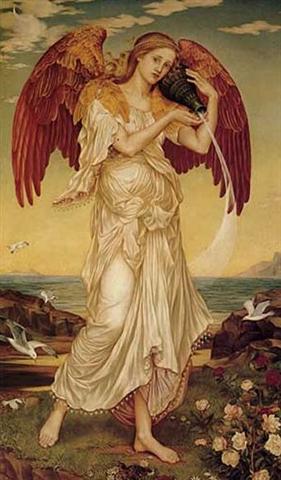2. Man is equipped with a pair of eyes looking ahead and these enable us perceive in depth. To see things from different perspectives is the only way to embrace another world view than the superficial 2-dimensional one (of the Aesopian fables). Mesopotamia - the land between the pair of contrasting rivers, the one which is quick as an arrow (i.e. young) Tigris in the east and the slower one (more mature) Euphrates in the west - was flowing out with its harbour Eridu (also named Nunki): 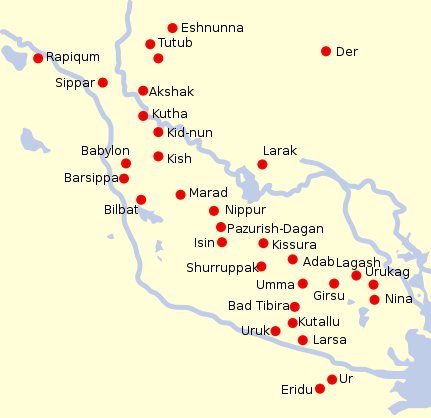 In the west another world map ruled the minds, a view with the Mediterranean Sea in the center. This Sea was bordered by Land in the north (Europe) and by Land in the south (Libya). To travel from one continent to the other involved a vertical voyage: 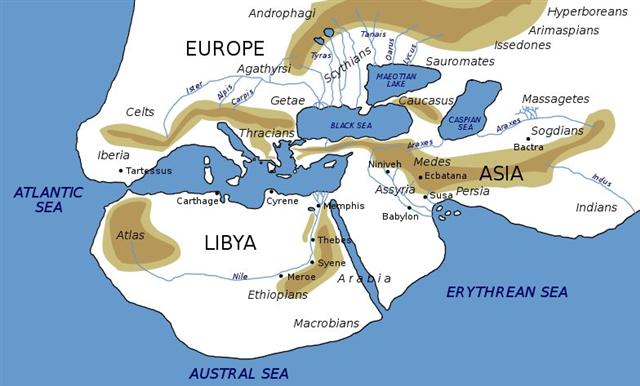 The Polynesians may have had a similar world view. The Sea was their home and it was possible to go across from one land to another:
One of the names of Easter Island was Te Pito o te Henua (usually translated as 'The Navel of the World'). Indeed Easter Island is located in the center of this world of water. I found a fascinating Polynesian Octopus (equipped with 4 pairs of flexible limbs like serpents) in Peter H. Buck's Vikings of the Pacific:  The Mother Land of the Polynesians, Havaii, has here been placed in the Tahiti group:
Easter Island is at the extremity in the east, which points at a remarkable coincidence. When Roggeveen and his men discovered the island in 1722 it was - they say - Easter Sunday. In 1722 Easter Sunday was in April 5, i.e. day 15 from March 21. "Easter ... festival of the Christian Church commemorating the resurrection of Jesus Christ from the dead ... derived by Bede from the name of a goddess whose feast was celebrated at the vernal equinox ..." (The Oxford Dictionary of English Etymology) "east ... in the direction of the rising sun ... f. IE. base *aus-, as in L. aurōra (:-*ausōsā), auster (cf. AUSTRAL), Gr. (Ęolic) aśōs dawn, aśrion (:- *ausrion) to-morrow, Lith. aurą; cf. Skr. ushās morning, dawn. So Easter nearest the east, eastern ..." (The Oxford Dictionary of English Etymology)
Sun ('the year in leaf') can be imagined to be born at spring equinox. His place of birth must obviously be at the horizon in the east. This is where his navel string is attatched.
One is reminded of the basic rule for string games - never to play them before Sun has risen well above Mother Earth. His navel string must first be cut and taken care of. |
